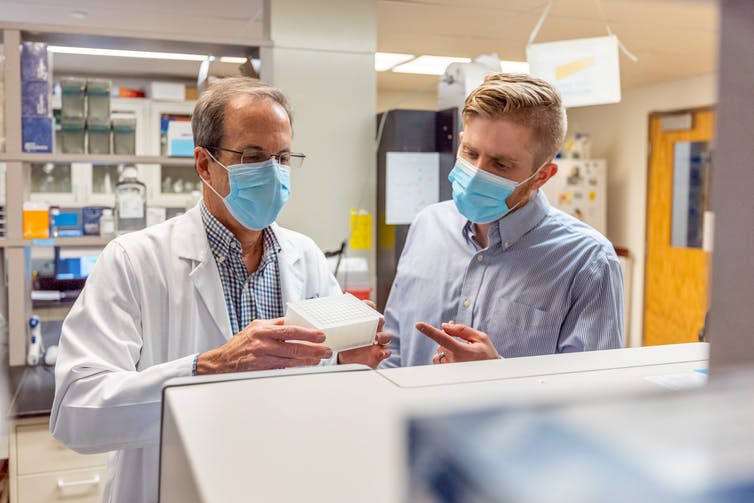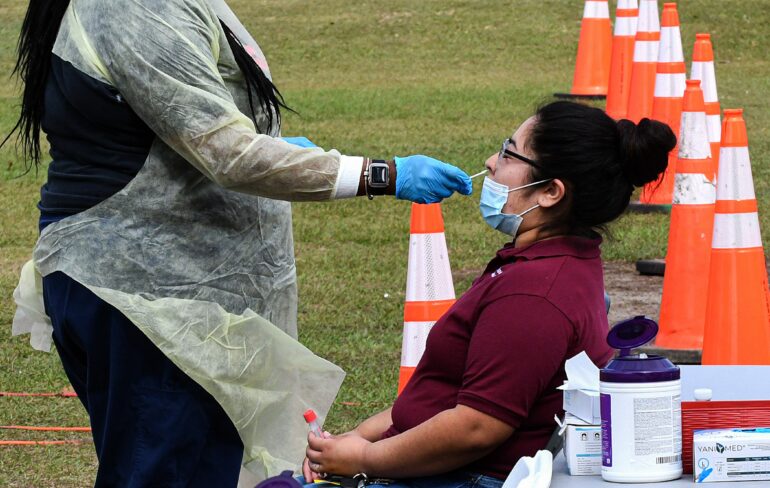The omicron variant quickly took over the global coronavirus landscape after it was first reported in South Africa in late November, 2021. The U.S. became the 24th country to report a case of omicron infection when health officials announced on Dec. 1, 2021, that the new strain had been identified in a patient in California.
How do scientists know what versions of the coronavirus are present? How quickly can they see which viral variants are making inroads in a population?
Alexander Sundermann and Lee Harrison are epidemiologists who study novel approaches for outbreak detection. Here they explain how the genomic surveillance system works in the U.S. and why it’s important to know which virus variants are circulating.
What is genomic surveillance?
Genomic surveillance provides an early warning system for SARS-CoV-2. The same way a smoke alarm helps firefighters know where a fire is breaking out, genomic surveillance helps public health officials see which coronavirus variants are popping up where.
Labs sequence the genome in coronavirus samples taken from patients’ COVID-19 tests. These are diagnostic PCR tests that have come back positive for SARS-CoV-2. Then scientists are able to tell from the virus’s genome which coronavirus variant infected the patient.
By sequencing enough coronavirus genomes, scientists are able to build up a representative picture of which variants are circulating in the population overall. Some variants have genetic mutations that have implications for prevention and treatment of COVID-19. So genomic surveillance can inform decisions about the right countermeasures – helping to control and put out the fire before it spreads.
For example, the omicron variant has mutations that diminish how well existing COVID-19 vaccines work. In response, officials recommended booster shots to enhance protection. Similarly, mutations in omicron reduce the effectiveness of some monoclonal antibodies, which are used both to prevent and treat COVID-19 in high-risk patients. Knowing which variants are circulating is therefore crucial for determining which monoclonal antibodies are likely to be effective.

The authors load samples for genomic sequencing in their lab.
Nathan Langer/UPMC, CC BY-ND
How does genomic surveillance work in the US?
The U.S. Centers for Disease Control and Prevention leads a consortium called the National SARS-CoV-2 Strain Surveillance (NS3) system. It gathers around 750 SARS-CoV-2-positive samples per week from state public health labs across the U.S. Independent of CDC efforts, commercial, university and health department laboratories sequence additional specimens.
Each type of lab has its own strengths in genomic surveillance. Commercial laboratories can sequence a high number of tests, rapidly. Academic partners can provide research expertise. And public health laboratories can supply insight into local transmission dynamics and…



